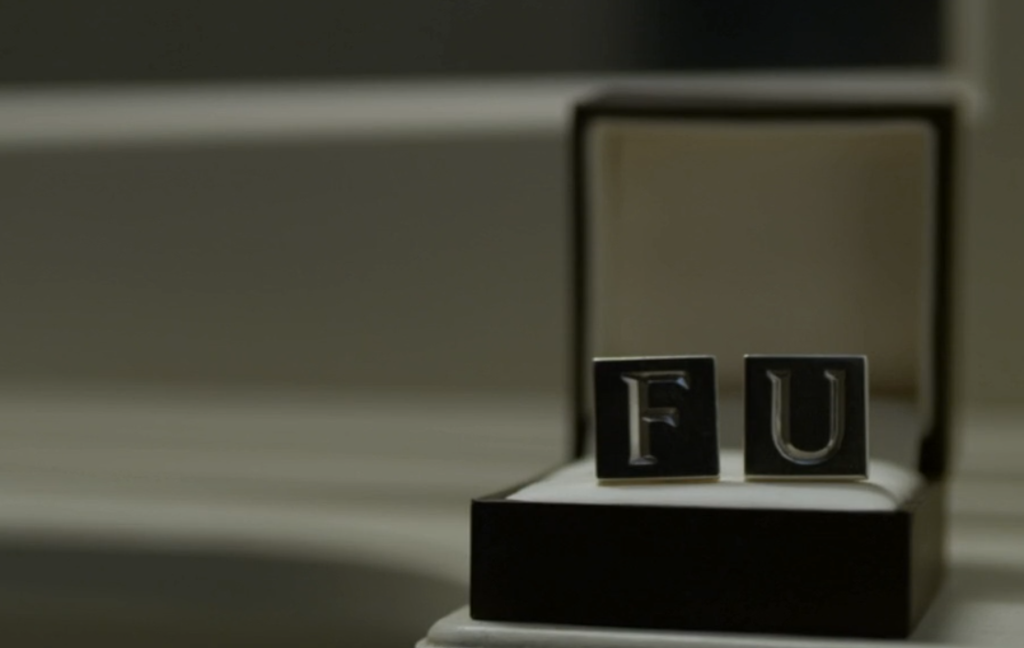At around 5 PM on Wednesday afternoon, RT (formerly Russia Today) anchor Liz Wahl decided to call it quits on-air, accusing the channel of “[whitewashing] the actions of Putin.”
Wahl’s announcement created quite the buzz in media circles. The New York Daily News, temporarily losing track of the date by several decades, declared: “A ‘Russia Today’ anchor broke through the Iron Curtain.” The New York Times ran a piece headlined “Russian Channel’s War Coverage Continues to Cost It Journalists.” MSNBC host Lawrence O’Donnell dubbed Wahl “today’s bravest person on TV.” And Business Insider helpfully proclaimed: “Anchor For Russian Propaganda Channel Dramatically Quits In Protest Live On The Air.”
Perhaps no one was more effusive in his praise for Wahl than James Kirchick, a contributor to The Daily Beast. In an “exclusive” post-resignation correspondence with Wahl, Kirchick reports that, as far back as last August, “Wahl felt morally compromised working for the network, she told me, but wasn’t yet prepared to quit.” (Wahl had first contacted Kirchick last year after he had taken a brief hiatus from agitating for whistleblower Chelsea Manning’s execution in order to stage a bizarre one-man TV protest against Russia’s undeniably pervasive homophobia — a stunt that lasted two minutes and was utterly unrelated to the panel on which he’d been asked to participate.)
“Wahl did a very brave thing,” Kirchick concluded. “Unlike [Abby Martin, another RT anchor who had expressed her displeasure at Russia’s Crimea intervention, two days prior to Wahl], who will continue to cash Putin’s paychecks, Wahl is now out of a job. But that’s the price real reporters—not Russian-government funded propagandists—have to pay if they are concerned with quaint notions like objectivity and the truth.”
Aside from the obvious absurdity of calling an American anchor working from Washington, D.C. “brave” for publicly denouncing the editorial decision-making process of her foreign employer, Kirchick’s article failed to define what exactly differentiates “real reporters” from “Russian-government funded propagandists.”
This is especially surprising given Kirchick’s own background as a reporter for a government-funded propaganda network. As a recent writer-at-large for Radio Free Europe/Radio Liberty (RFE/RL), Kirchick and his employer were funded entirely by the United States Congress. RFE/RL got its start in 1949, when it was founded by the anti-Communist organization National Committee for a Free Europe. That organization was launched, in turn, by none other than Allen Dulles, who just four years later would take the helm of the CIA as the Director of Central Intelligence. (He still holds the record for the longest tenure as DCI.)
RFE/RL was itself funded by the CIA as late as 1971, a fact that brought the radio network no small amount of notoriety. During the Cold War, Radio Free Europe headed up an American anti-Soviet propaganda operation that “sent 590,415 balloons that carried 301,636,883 leaflets, posters, books, and other printed matter from West Germany over the Iron Curtain to Czechoslovakia, Hungary and Poland from August 1951 to November 1956.” (The historical legacy of this “extensive propaganda campaign” is recounted on RFE/RL’s web site.)
Today, RFE/RL is overseen by the Broadcasting Board of Governors (BBG), an entity that also supervises other bastions of independent journalism such as Voice of America, Radio Free Asia, and the Office of Cuba Broadcasting. (This is the same Office of Cuba Broadcasting that, during the George W. Bush administration, paid ten reporters varying totals of up to $240,000 each to disseminate anti-Castro opinion — the revelation of which resulted in the termination of three of them by El Nuevo Herald, The Miami Herald‘s Spanish counterpart.) The BBG is itself under the watchful eye of foreign relations committees in both the House and the Senate, and its budget is set annually by Congressional appropriations committees as well. Last year a former board governor, commenting on an inspector general’s report portraying widespread dysfunction at the BBG, explicitly described the organization’s purpose as “telling [the American] story worldwide.”
Kirchick’s role at RFE/RL included filing American-friendly stories with headlines such as this one, from August 26, 2011: “As Libyan Rebels Assert Control, Calm Descends Over War-Torn Capital.” In that particular piece, published five months after the U.S. and its allies launched a military intervention in Libya that quickly obliterated the operation’s stated objectives (as described by United Nations Security Council Resolution 1973), Kirchick bizarrely declared:
As fighting continues in the Libyan capital between rebels and fighters loyal to deposed leader Muammar Qaddafi, a sense of calm has finally settled over most of the city, putting something of an end to what has been the most intense conflict to emerge in the “Arab Spring.”
And everyone lived happily ever after. As The New York Times summed up last month:
Precious little has been achieved in Libya since the war that killed Colonel Qaddafi and ended his 42 years of autocratic rule. The country held its first free elections amid much euphoria in 2012, creating a General National Congress that then appointed a new government.
But both bodies have come under criticism for failing to manage the country effectively. Security is deteriorating amid growing corruption and perceived incompetence, and the Congress has been frequently gridlocked by a strong divide between Islamist parties and the more liberal groups that are nervous about the growing power of the Islamists.
Tensions have been rising in recent weeks as the militias that fought the war against Colonel Qaddafi have tried to influence the political process. Prime Minister Ali Zeidan was abducted from his hotel and held for hours in October by militia members who wanted to force his resignation. On Tuesday, two militia groups demanded that the Congress dissolve itself or face the arrest of its members.
You know, “something of an end” to the conflict. It’s almost enough to make one wonder whether Kirchick’s coverage was influenced by the government that funded him.
Indeed, given the reality of his former employer’s history and present (an association which Kirchick happily touts on his own site), it seems particularly incongruous of him to call Liz Wahl brave for stating the below today:
Last night RT made international headlines when one of our anchors went on the record and said Russian intervention in Crimea is wrong. And indeed as a reporter on this network, I face many ethical and moral challenges — especially me personally, coming from a family whose grandparents, my grandparents, came here as refugees during the Hungarian revolution, ironically to escape the Soviet forces.
I have family on the opposite side, on my mother’s side, that sees [sic] the daily grind of poverty, and I’m very lucky to have grown up here in the United States. I’m the daughter of a veteran. My partner is a physician at a military base where he sees every day the first-hand accounts of the ultimate prices that people pay for this country. And that is why personally I cannot be part of network [sic] funded by the Russian government that whitewashes the actions of Putin. I’m proud to be an American and believe in disseminating the truth. And that is why, after this newscast, I’m resigning.
Even leaving aside the above confusing litany of digressions — which reads more like a checklist of patriotic cliches than a plausible justification for quitting one’s job on a live television show — there is little courageous about Wahl’s pronouncement. And the timing, coming just two days after her colleague Abby Martin’s more measured criticism of Russian foreign policy — statements that did not, as it turned out, culminate in a melodramatic abdication of the anchor’s perch — is certainly interesting, to say the least. Perhaps strangest of all, however, is Wahl’s apparently sudden epiphany as to RT’s source of funding. One can only surmise, of course, that James Kirchick remained just as blissfully unaware of his own benefactors during his time at RFE/RL.
RT, in responding to Wahl’s accusations, stated:
When a journalist disagrees with the editorial position of his or her organization, the usual course of action is to address those grievances with the editor, and, if they cannot be resolved, to quit like a professional. But when someone makes a big public show of a personal decision, it is nothing more than a self-promotional stunt.
Even given the blatant pro-Kremlin slant of RT’s entire oeuvre, it is hard to disagree with the network’s assessment. Wahl leaves RT for an almost certainly brighter future in American journalism: by feuding with her employer — whose bankrollers in the Kremlin are particularly vilified in the popular American mindset at the moment — in such a public manner, she managed both to significantly raise her media profile and to solidify her mainstream American bona fides at the same time. (Hey, it worked for Juan Williams.) Fox News must already be on the phone.
But RT’s editor-in-chief Margarita Simonyan, speaking in the wake of Abby Martin’s on-air critique, scored the most on-point observation:
Media outlets do not exist in a vacuum. Can you really expect any American corporate-owned news network to report a story in a way that goes against the U.S. national interest? Or Euronews to not advocate [European Commission] positions?
Given our own recent history with unjustified violations of other nations’ sovereignties, Simonyan’s question seems fair — “Russian-government funded propagandist” or not. As for James Kirchick, well, it takes one to know one.




















